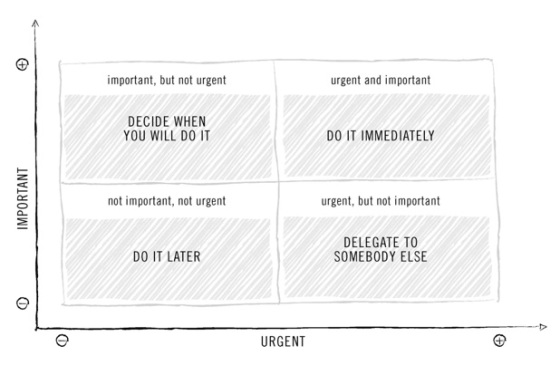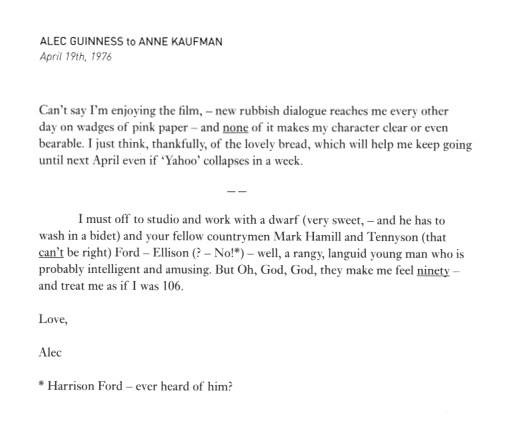Dodgy wearables indiegogo pitch.
Airo gets a mention.
OK, I get it.
http://pando.com/2014/03/20/on-indiegogo-a-miracle-health-device-raises-730k-and-a-whole-load-of-red-flags/
 BY JAMES ROBINSON
BY JAMES ROBINSON
ON MARCH 20, 2014

It’s the stuff that crowdfunding dreams are made of.
An Indiegogo campaign for a gorgeous piece of wearable tech, shown off in a slick video with some great visuals. Speaking with a thick Russian accent, Healbe CEO Artem Shipitsyn describes what his company calls the ‘The Original 100% Automatic Body Manager.’ It’s called the ‘GoBe’ and it does everything a Fitbit can but so, so much more. Using Healbe’s “Flow” technology – pressure and impedance sensors mixed with an accelerometer – the device is capable of reading glucose levels through your skin to give an accurate calorie count of everything you’ve eaten, against all the energy we’ve burnt. Despite Shipitsyn’s accent, the device’s Indiegogo page says that the company is based in San Francisco.
“Tell it nothing. Know everything. Go be you,” the video signs off. The GoBe will be delivered by June of this year, to anyone who stumps up just $199.
This, ladies and gentlemen, is a market changer. Step right up!
And people have certainly stepped up. As of midday today, Shipitsyn’s campaign has raised $730,294 in two weeks, from 3253 backers — more than seven times its initial funding goal. Thirty-three backers have paid $1175 for a “Club Pack” including ten GoBe-s.
No shame in admitting it: I was impressed. If GoBe did what it claimed, this was the end of the Fitbit, the Up and just about every other weight loss technology.
And so, keen to be the first reporter to cover this marvelous piece of technology, I started asking questions. What I discovered was something far from the slick, bay area startup Healbe purported to be. Rather, I found a publicity shy company, operated remotely from Russia, promoting a device unsupported by any medical or scientific evidence whatsoever. One that thousands of backers have supported to the tune of almost three quarters of a million dollars, and one that Indiegogo says raises no red flags. In the exact words from an Indiegogo spokesperson: ”We have no reason to believe that this company’s Indiegogo campaign is at all fraudulent.”
[UPDATE: The day after publication, a different spokesperson for Indiegogo took issue with the idea that no red flags were ever raised by the campaign, finally confirming to us that the campaign was indeed investigated– and cleared– by Indiegogo’s usual anti-fraud methods. She declined to explain why the basic mistruths and inconsistencies we found in our reporting– which haven’t been denied by Healbe– didn’t concern Indiegogo. She also declined to explain what types of discoveries would lead Indiegogo to conclude an offering was fraudulent.]
My initial doubts were raised last week when I contacted the company’s information line and received no response. This is odd. Normally when I contact the folks behind crowdfunding campaigns, the response is prompt, and enthusiastic. The more publicity, the more money, after all.
I try again this past Monday. Finally, Meghan Donovan, from MicroArts Creative Agency in Greenland, New Hampshire replies, asking if we can talk the next day. There’s just one problem, she explains when we speak: everyone at Healbe was travelling through the end of the week. She promises to get back to me within a couple of days.
A Google search shows that the GoBe has been the subject of about two dozen press articles, but all of them either quote from the press release or the Indiegogo campaign itself. No major tech website has covered the device, and no scientists seem to be as excited as I am about its apparent medical breakthrough. Healbe might be the most press-shy successful startup on earth.
Artem Shipitsyn (also spelt as Shipitsin) and five of his six colleagues listed on the Indiegogo page – George Mikaberydze, Stanislav Povolotskiy, Michael Rubin, Eugene Sokolov, Pavel Mussel – are traceable online only in relation to this one Indiegogo campaign. Shipitsyn lists himself on the page as “a major developer of market solutions and new products for global brands such as Rostelcorn, Sberbank, L’Oreal, Valio, Reebok, Hearst Shkulev, Discovery Channel and more.” And yet on hisLinkedIn profile he lists none of that, describing himself instead as the owner, since 2004, of Iridium, a marketing company in Russia with little discernible online footprint. And now the CEO of Healbe.
Healbe’s website lists no contact details except for the email address that connected me to Donovan’s PR agency in New Hampshire. An address listed for Healbe Incorporated on an old version of its website leads to a law firm, White Summers, in Redwood City. A receptionist for White Summers confirms that Healbe is a client. The company itself is registered in Delaware. This is apparently the extent of its American infrastructure.
Meanwhile, some of GoBe’s backers are getting cold feet: requests for refunds are starting to trickle on to Healbe’s Indiegogo page, dissent is growing on the company’s Facebook and a few Redditers are getting twitchy.
Michelle MacDonald, a clinical dietician at the National Jewish Health hospital in Denver, tells me that her eyebrows were raised almost immediately when she read Healbe’s claims that, through an “algorithm,” it can work out from glucose levels in our cells what our caloric intake was. “Of course they’re claiming an algorithm, because it’s a fun word,” McDonald laughs.
The problem is, MacDonald explains, the three main nutrients that determine caloric intake are carbohydrates, protein and fats. Glucose provides only a small part of the picture. A company that invented a non-invasive way to measure glucose would be a huge hit with the treatment of diabetes. Currently, diabetes sufferers have to prick their skin and make themselves bleed. The technology is probably coming soon, MacDonald says, but when it does it will be the size of a shoebox. It will also likely involve some form of infrared light shone through the skin that will measure the fluid in interstitial cells to approximate the blood glucose level in a simple milligrams per deciliter figure. It will come from a big lab, will be huge news and make a lot of money.
“If you actually had this technology, Indiegogo would be the last channel you’d go through,” MacDonald says.
Let’s imagine that Healbe really has perfected this technology, though. Even so, MacDonald says, nothing described in the video could do what it claims to. The impedance monitor could look at hydration, the pressure monitor could examine pulse and the accelerometer could tell us about action. But none of those three things could tell you anything about glucose levels. A graphic of Healbe’s accompanying smartphone app even shows it measuring fat and carbohydrates, which is doubly ridiculous.
MacDonald takes particular umbrage at Healbe listing its chief scientist Eugene Sokolov as having a background as a rocket scientist. “I wish I was a standup comedian. I could really run with that,” she laughs. Maybe they’ve left out the key part from the video, she hedges. “But when you fail to explain it, that’s always a red flag.”
In fact there are multiple red flags.
I call Meghan Donovan back. She assures me that the GoBe is a real, working device. Her company was employed by Healbe in Fall 2013 and Shipitsyn came into the MicroArts office to film the Indiegogo video in January. He bought two models in for the video, but Donovan admits that she never saw the device in action. Shipitsyn told her that they were doing their own internal tests. But, she tells me, Healbe displayed its product at CES. That’s something.
On closer inspection, Healbe’s Indiegogo page talks about having “unveiled” the GoBe at CES. Except when I look, there’s no reference to Healbe in the CES directory of exhibiting companies in 2014.
I talk to Healbe’s industrial designer Jozeph Forakis, who has done work for Motorola and Swatch in the past. Over Skype from Italy, Forakis confirms that he has worked with Shipitsyn and Healbe for a year on several different prototypes, “the most recent of which were shown in January in CES.”
Why, then, can’t I find any reference to Healbe in the CES directory? Well, Healbe wasn’t technically at CES Forakis admits. But Shipitsyn was in Las Vegas at the time, taking meetings in his hotel room.
Forakis and Donovan are the only two people I can find who claim to have seen a GoBe in real life. Neither are willing to vouch for the science behind it.
At least Indiegogo believes in Shipitsyn. The Healbe campaign raises no red flags, a company spokesperson tells me. Indiegogo, she says, has a vested interest in security. It prides itself on its “equal opportunity, open platform… literally anyone from anywhere in the world can raise money here.”
In October last year, a Canadian company called Airo Health promised a wearable that could do the same thing as Healbe, with a slightly different technique – looking at nutrient levels in our blood by shining a light through it. The company took pre-orders through its website, but a month later refunded all of its customers. “Through conversations with others in the industry, we have come to realize that it requires further testing,” the company said in a release.
Indiegogo protects itself against fraud with an algorithm — that word again — that detects troublesome accounts, alongside human vetting and the group mentality of crowdfunding picking out bad eggs.
Fraud is a slippery term, though. It doesn’t account for more subtle manipulations. Healbe’s Gobe activity tracker looks enough like a Fitbit that the average shopper can grasp what it is, and what it might be able to do. The automatic calorie reader claim is an advancement that we can all appreciate the significance of, but few of us can pick apart the science behind. Indiegogo can protect against an outright fraudster, but a snake oil salesman with an unproven product is a different matter. Since the beginning of recorded history, opportunists have been using impressive pitches to sell miracle health potions and devices — really the only thing that’s changed is the technology (although it used to be that if you were conned by a snake oil salesman, at least you’d end up with a pretty glass bottle. Indiegogo can’t even promise that.)
Indiegogo wants to keep these concerns inside the domain of the campaigner-funder relationship. Despite $730,000 in pledges, Indiegogo’s position is that as long as there’s a real company claiming to make something that doesn’t violate its terms of service, it has no moral or legal obligation to ensure that the GoBe is legit. All backers can do is wait until June to see if their miracle band shows up and does what it says in the video.
I was finally able to reach Shipitsyn and Healbe’s managing director George Mikaberydze this morning in Moscow, Russia, via Skype, two hours before my deadline for this piece. Their schedules had apparently become more flexible since I started asking questions.
Shipitsyn holds the device close to the camera — it seems to be the same as in the video — while Mikaberydze points to a fuzzy line on an app that, he says, breaks down his energy consumption over the last 20 minutes since he ate a Snickers bar. They were at CES, they say, as the guest of Levin Consulting, with their own meeting room. They hold up an attendee badge showing, at least, that they visited the conference.
So what about the science? Shipitsyn says that the impedance monitor in the Gobe can measure glucose by monitoring the water moving in and out of cells. Insulin opens up the cells when you eat sugar, he says. The company will publish their own clinical tests soon and are discussing with a third party clinic in America, Shipitsyn insists. They’ve slipped off the medical radar because the accuracy rates range between 80 and 90 percent. The head of Samsung Russia is apparently a huge fan.
It’s a breezy, confident pitch. Shipitsyn and Mikaberydze have a ready response to all of my concerns — the subtext being that I really ought to trust them.
But here’s the rub: I don’t. Or at least not enough to part with $199 for a device for which they haven’t yet released any clinical test results (despite their insistence that these apparently do exist) and which, right now, only exists as a demo on a screen.
I’ve jostled myself right up to the soapbox, pushed my face as close to the screen as it’s possible to get, and I still have absolutely no hard evidence that this device is any more than a smart mock up. Shipitsyn says its a miracle machine, at least one expert says it can’t possibly exist.
What I know for a fact is this: in about three weeks, Healbe will be close to three quarters of a million dollars richer, at least. Indiegogo says they have no reason to withhold the money raised, or to doubt that it will be used to deliver GoBes to three-and-a-bit thousand backers who have, presumably, weighed up the risks for themselves and decided to put their faith in Shipitsyn and his partners. Shipitsyn himself says there’s nothing to worry about, but it won’t be until at least June — plenty of time for the money to have moved from a Delaware corporation to a bank account in Moscow — before we know the truth.
Pando will keep pushing HealBe to publish their trial results and I’ll embed them in this post if and when they do. In the meantime, anyone who is inclined to bet $199 or more on a miracle weight loss device might recall the old maxim: if something seems too good to be true, it probably is.
Shipitsyn has a hell of a pitch, but my $199 is staying in my pocket.
See here for the latest updates on this story.

James Robinson is a staff writer for PandoDaily covering hardware, advertising technology and the Internet of Things… among many other general goings on. Follow him on Twitter: @jalrobinson.
 BY
BY 





